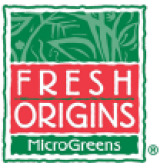


Nasturtiums Flowers
Estimated Inventory, 50 ct : 8.00
This item was last sold on : 06/30/25
| Fresh Origins | Homepage |
Description/Taste
Nasturtium flowers are small to medium in size, averaging 2-6 centimeters in diameter, and typically have five petals that vary in shape from broad and wide to oval, depending on the variety. The petals are thin, delicate, velvety, and soft with colors ranging from yellow, orange, maroon, to red. There are also a few central stamens that contain golden yellow pollen inside the center of the petals. Nasturtium flowers are aromatic with a fragrance reminiscent of mustard and have a tender, mild, peppery, and slightly spicy taste.
Seasons/Availability
Nasturtium flowers are available in the spring through fall.
Current Facts
Nasturtiums, botanically classified as Tropaeolum majus, are a flowering annual that belongs to the Tropaeolaceae family. There are many different varieties of Nasturtium plants that can be found in climbing, semi-trailing, and dwarf forms, and these plants were one of the most popular plants in the early 1900s for their easy-to-grow nature. In the past decade, Nasturtiums have seen a resurgence in popularity as an edible, home garden plant and the flowers are used to add color, a mild peppery flavor, and soft texture to both savory and sweet culinary dishes. Both the flowers and leaves of the Nasturtium plant are edible and have a peppery taste, similar to that of watercress.
Nutritional Value
Nasturtium flowers are an excellent source of vitamin C, iron, manganese, beta-carotene, and flavonoids.
Applications
Nasturtium flowers are best suited for raw applications as their delicate nature cannot withstand high heat preparations. They are commonly added in as a finishing element and garnish to dishes and are tossed into green salads, pasta, grain bowls, and stir-fries. The petals can also be layered in sandwiches and quesadillas, stuffed with cream cheese and herbs, minced and blended into butter, or pureed with the leaves to make a nasturtium pesto. Both the buds and seeds of the nasturtium plant are edible and are commonly pickled yielding a flavor and texture similar to capers. In addition to savory applications, Nasturtium flowers can be frozen in ice cubes, blended into smoothies, or used to decorate cakes. Nasturtium flowers pair well with meats such as veal, poultry, fish, corned beef, and ham, shrimp, fruits such as bananas, blueberries, avocado, and tomatoes, scallions, radish, beets, leafy greens such as arugula, mesclun, baby spinach, oak-leaf, and red-leaf, potatoes, herbs such as chervil, dill, and tarragon, pine nuts, parmesan cheese, and almonds. The flowers should not be picked until they are needed, but once picked they will keep up to two days when stored loosely in plastic bags in the refrigerator.
Ethnic/Cultural Info
Nasturtium flowers have been used medicinally for centuries and were first used in South America as a treatment for hair loss and to help reduce symptoms associated with skin irritations. In Asia, the flowers and leaves were also used to make nutritious teas that were believed to help combat the common cold due to their high vitamin C content. As the bright colored flowers were introduced to Europe, they became a symbol of victory and patriotism versus a medicinal ingredient as many believed the circular leaves resembled shields and the flowers helmets. Soldiers would wear Nasturtiums after a victory in battle and would be gifted the flower from a maiden or offered an entire blanket made out of the flowers as a symbol of honor and victory.
Geography/History
Nasturtium flowers are native to South America, specifically Peru, and have been growing wild since ancient times. The flowers then found their way to Europe via Spanish conquistadors in the 1550s and the long trailing vines and flowers that we are familiar with today were developed by a Danish botanist from the small plants brought to Europe. Nasturtium flowers were seen in the United States as early as 1759 and were planted in Thomas Jefferson’s Monticello garden. Today Nasturtium flowers can be found at specialty markets and farmers markets in Europe, regions of South America, and in California, Virginia, Pennsylvania, and Hawaii of the United States.
Featured Restaurants
Restaurants currently purchasing this product as an ingredient for their menu.
| Campfire | Carlsbad CA | 760-637-5121 |
| Kingfisher | San Diego CA | 619-861-8074 |
| Hyatt Islandia | San Diego CA | 619-224-1234 |
| Dija Mara | Oceanside CA | 760-231-5376 |
| Selva Coffee | San Diego CA | 619-585-1118 |
| Panama 66 (Bar) | San Diego CA | 619-702-6373 |
| Urban Kitchen Catering | San Diego CA | 619-276-8803 |
| Huntress | San Diego CA | 619-955-5750 |
| The Seabird Resort | Oceanside CA | 442-222-9505 |
| Hamburger Hut | Encinitas CA | 760-230-1999 |
| Hotel Republic San Diego | San Diego CA | 951-756-9357 |
| Corbeaux Wine & Tea House | Temecula CA | 909-567-6109 |
| Mabel's Gone Fishing | San Diego CA | 619-228-9851 |
| Nolita Hall | San Diego CA | 619-618-8820 |
| La Costa Resort & Spa Main Kitchen | Carlsbad CA | 760-930-7063 |
| Choi's | San Diego CA | 858-900-1224 |
| insideOUT | San Diego CA | 619-888-8623 |
| Park Hyatt Aviara | Carlsbad CA | 760-448-1234 |
| Paradisaea Restaurant | La Jolla CA | 732-915-6669 |
| Park Hyatt Aviara (Ember & Rye) | Carlsbad CA | 760-448-1234 |
| The Tavern | Coronado CA | 602-628-5890 |
Recipe Ideas
Recipes that include Nasturtiums Flowers. One




 Learn More...
Learn More...
